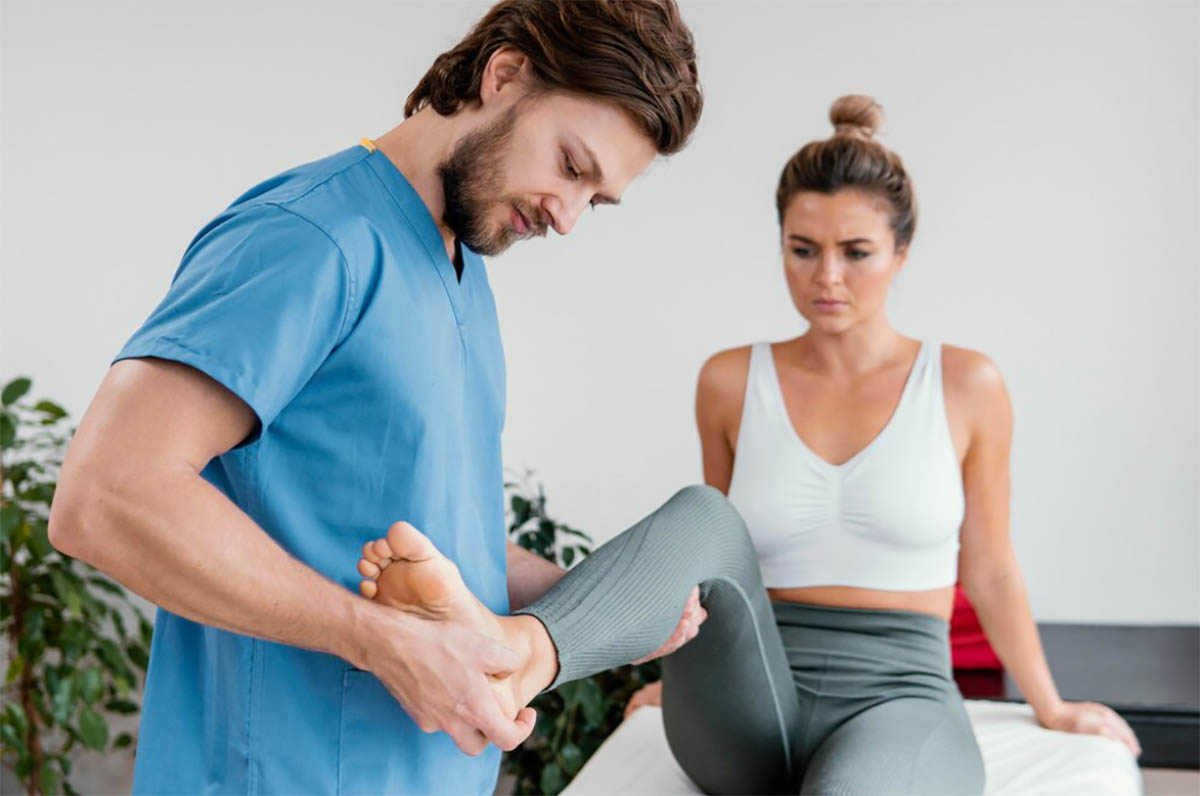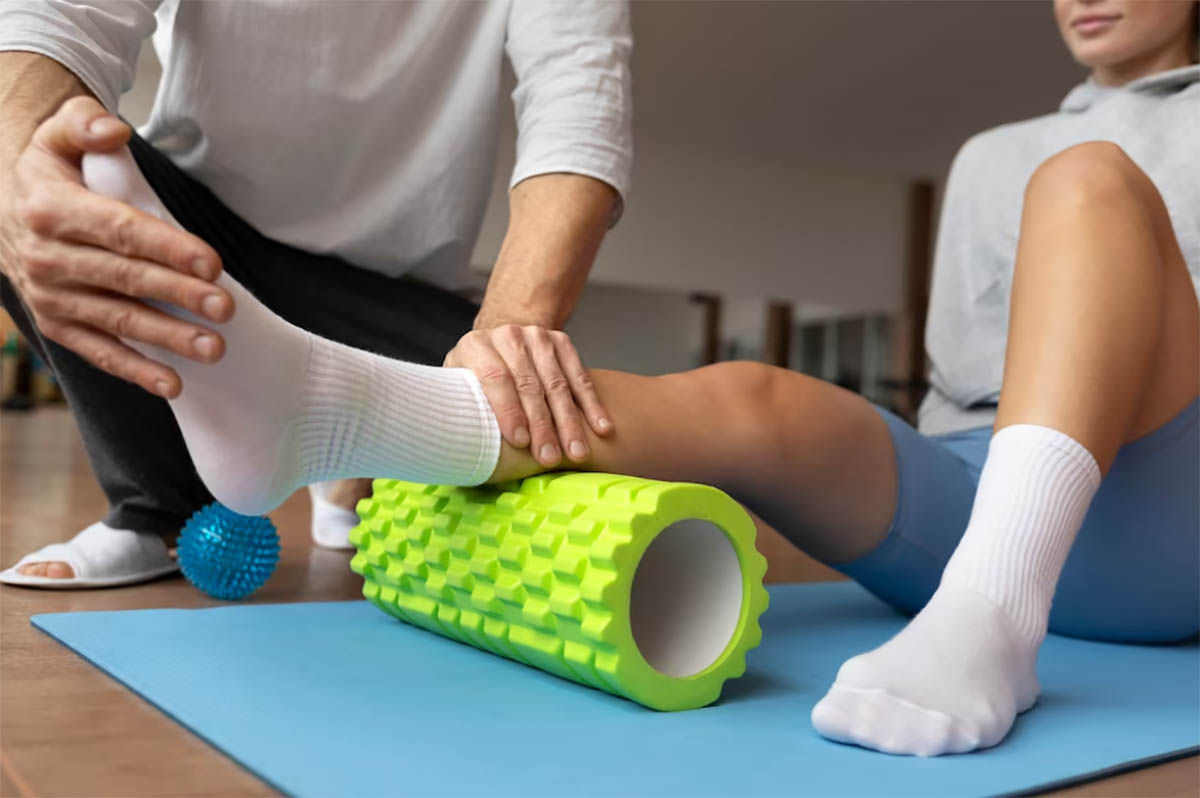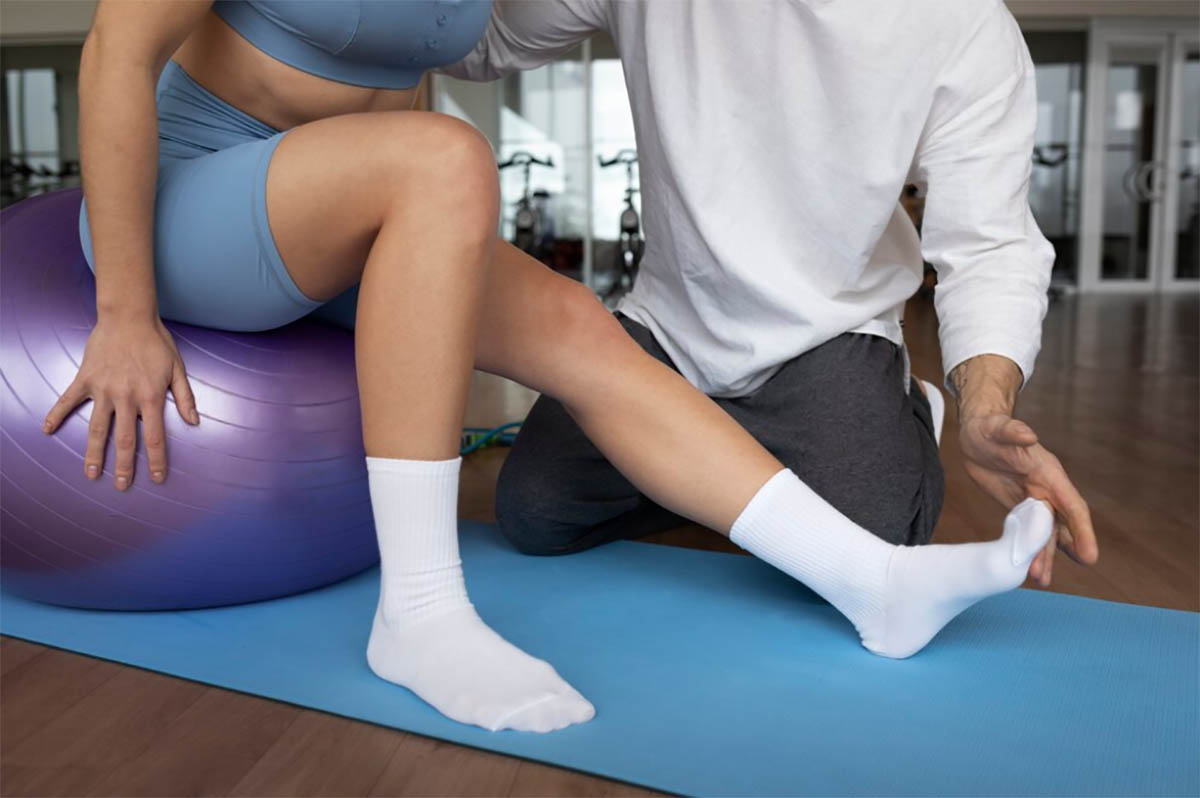
Introduction
Patellar tendinitis, also known as jumper’s knee, represents a significant concern for athletes and physically active individuals, manifesting as persistent patellar tendon pain. This condition is more accurately termed patellar tendinopathy when chronic changes occur within the tendon. Effective rehabilitation strategies, including physical therapy and progressive tendon-loading exercise therapy, are pivotal in managing knee pain and facilitating a return to activity.
This blog aims to explore the nuances of patellar tendinitis rehab, emphasizing conservative treatment options, load management techniques, and the importance of tailored exercise regimens. The primary goal of patellar tendinitis physical therapy is to alleviate pain and reduce inflammation.
Understanding Patellar Tendinitis
Anatomy of the Knee Joint
The knee joint’s complexity, involving the patella (kneecap) and its tendon, plays a crucial role in leg extension and the ability to perform movements such as jumping and running. Patellar tendinopathies develop due to repetitive stress and strain, leading to pain and dysfunction, primarily affecting the mechanism of knee extension.
Causes and Risk Factors of Patellar Tendinitis
Key factors contributing to the development of patellar tendinitis include overuse, especially in sports requiring explosive leg movements, and imbalances in the knee extensors. Elite athletes, particularly those involved in volleyball and basketball, frequently experience patellar tendon pain due to the repetitive loading of the knee joint brought by regular training.
Additionally, biomechanical factors, such as improper landing strategies or kinetic-chain deficits, can exacerbate the risk of injury for leg muscles, and cause other pain in athletes like muscle spasms.
Symptoms and Diagnosis of Patellar Tendinitis
The clinical presentations of patellar tendinitis include localized pain at the tibial tuberosity, exacerbated by activities that place a load on the patellar tendon. Diagnosis is often clinical, supported by imaging techniques like magnetic resonance imaging (MRI) to rule out other potential diagnoses and to visualize the extent of tendon abnormality.
Goals of Physical Therapy for Patellar Tendinitis

Reducing Pain and Inflammation
Conservative treatment begins with efforts to minimize pain and inflammation, employing ice therapy and modalities such as transverse friction massage. The use of a patellar tendon strap can also provide immediate relief, reducing strain on the tendon during activities.
Restoring Normal Tendon Function
Progressive loading of the tendon through isometric exercises, followed by isotonic and eccentric exercises, is fundamental in restoring tendon health. Isometric exercises, particularly, are beneficial for minimal pain management and initial pain modulation.
Strengthening Muscles
One effective exercise plan that has shown promising results in improving long-term outcomes is heavy slow resistance training. This type of training not only helps in increasing collagen production within the tendon but also brings about positive changes in the tendon structure. However, heavy slow resistance training alone may not be sufficient to prepare the tendons and muscles for fast, explosive loads often encountered in sports activities.
Strengthening the knee extensors and improving the function of hip extension muscles through exercises like the single-leg press and leg extension machine is crucial for supporting the patellar tendon.
Improving Flexibility and Range of Motion
Flexibility and range of motion can be enhanced through specific stretching exercises for the quadriceps, hamstrings, and calf muscles, vital for maintaining a healthy tendon and preventing future injuries.
Preventing Future Injuries
Education on proper training drills, load management, and realistic rehabilitation time frames is essential to prevent the recurrence of patellar tendinopathies. Understanding the relationship between landing strategy and knee pain can guide athletes in adopting safer techniques during athletic jump events. Complete rest is also very important to ensure full recovery.
Physical Therapy Techniques for Patellar Tendinitis
Initial Pain Management
Initial therapy focuses on reducing symptoms through ice therapy, the application of a rigid strap or patellar strap, and gentle stretching exercises to alleviate discomfort and facilitate early stages of healing.
Rest and Activity Modification
Modifying activities to avoid symptom provocation and implementing load modification strategies are critical steps in managing patellar tendon pain. Patients are advised to limit activities that induce pain and to engage in alternative training that does not overload the tendon.
Ice Therapy to Reduce Inflammation
Regular application of ice helps in managing inflammation, especially following exercises or activities that stress the knee joint.
Taping or Bracing to Support the Knee
The use of taping techniques or a patellar tendon strap can offer additional support, potentially reducing pain during exercise and daily activities.
Pain Relief Modalities
Incorporating pain relief modalities such as TENS or platelet-rich plasma injections may be considered, although the focus remains on exercise-based rehabilitation.
As we explore the evolution of treatment strategies for patellar tendinitis, it’s essential to recognize the shift from conventional wisdom. The RICE method outdated by current standards, has paved the way for more specialized and evidence-based approaches in patellar tendinitis physical therapy. This transition underscores the importance of keeping rehabilitation protocols in step with the latest research and clinical outcomes.
Flexibility and Range of Motion Exercises

To help prevent and alleviate patellar tendonitis, it is crucial to focus on strengthening and stretching the lower body muscle groups, including the quadriceps, hamstrings, and calves.
An essential component of the patellar tendinitis rehab protocol is a series of patellar tendinitis exercises, including isometric, isotonic, and eccentric exercises. A cornerstone of patellar tendinopathy rehabilitation is progressive tendon-loading, including eccentric exercise protocols like eccentric decline squat training. Such exercises are crucial for stimulating collagen synthesis and tendon remodeling.
Here are some examples of exercises that can improve flexibility and range of motion in the knee and pelvis, reducing tightness and stress on the patellar tendon.
Quadriceps Stretch:
- As a starting position, stand against a wall for support, with one leg extended out in front of you.
- Bend the other knee as far back as possible, feeling a stretch in the quadriceps.
- Hold the stretch for 15 seconds, then gradually increase to 30 seconds and eventually 1 minute.
- Repeat on both legs for three sets.
Hamstring Stretch:
- Sit on a chair and extend one leg out straight with the heel resting on the floor.
- Lean forward slowly, keeping the back straight, until a stretch is felt in the back of the leg.
- Hold the stretch for 30 seconds.
- Switch legs and repeat for three sets.
Calf Stretch:
- Stand facing a wall or post, with hands on the wall for support.
- Step forward with one foot and lean forward, bending the front knee while keeping the back leg straight.
- Feel the stretch in the calf muscle.
- Hold for 30 seconds.
- Switch legs and repeat for three sets.
This flexibility and range of motion exercises are designed to target the key muscles involved in patellar tendonitis, helping to prevent tightness and strain on the knee. By incorporating these stretches into your routine, you can improve muscle strength and flexibility, aiding in the recovery and prevention of patellar tendon issues.
Integrating Daily Activities and Sports-Specific Training
Gradual reintegration of daily activities and sports-specific movements is essential for a full return to function. Rehabilitation protocols from esteemed institutions recommend incorporating exercises that mimic the athlete’s specific sports demands, ensuring a comprehensive recovery.
Insights from Scottsdale Physical Therapy and Performance
At Scottsdale Physical Therapy and Performance, we understand the importance of therapy in patients and incorporating a comprehensive approach to rehabilitation and injury prevention.
Our team of experienced physical therapists and performance specialists work together to create personalized programs that cater to each individual’s needs and goals. Whether you are recovering from knee pain, like jumper knee, or looking to improve your overall performance, we have the expertise and resources to help you succeed.
If you are looking to learn more about how Scottsdale Physical Therapy and Performance can support you in your rehabilitation and performance goals, feel free to contact us or visit our website. Together, we can work towards achieving optimal health and fitness outcomes. Get your physical therapy in Scottsdale today!
Conclusion
Effective management of patellar tendinitis requires a multifaceted approach, emphasizing conservative treatment, progressive loading, and patient education on load management. Rehabilitation protocols should be personalized, considering the severity of symptoms and the individual’s specific needs. Adhering to a well-defined patellar tendinitis rehab protocol is crucial for achieving significant improvements.
By following evidence-based practices, including the strategic use of exercises and load modification, patients can achieve significant improvements in pain levels, function, and overall quality of life.
FAQs
What is the fastest way to heal patellar tendonitis?
Rapid recovery from patellar tendonitis involves early intervention with conservative treatment, including isometric exercises for pain modulation and progressive tendon-loading exercises to promote tendon healing.
How long does patellar tendonitis take to rehab?
The rehabilitation timeline for patellar tendonitis varies, typically spanning several weeks to months, depending on the severity of the condition and the patient’s adherence to the prescribed rehabilitation protocol.
Can I work out with patellar tendonitis?
Working out with patellar tendonitis is possible, provided the activities are modified to avoid exacerbating symptoms. Focus on low-impact exercises and closely monitor pain levels to guide activity selection.










